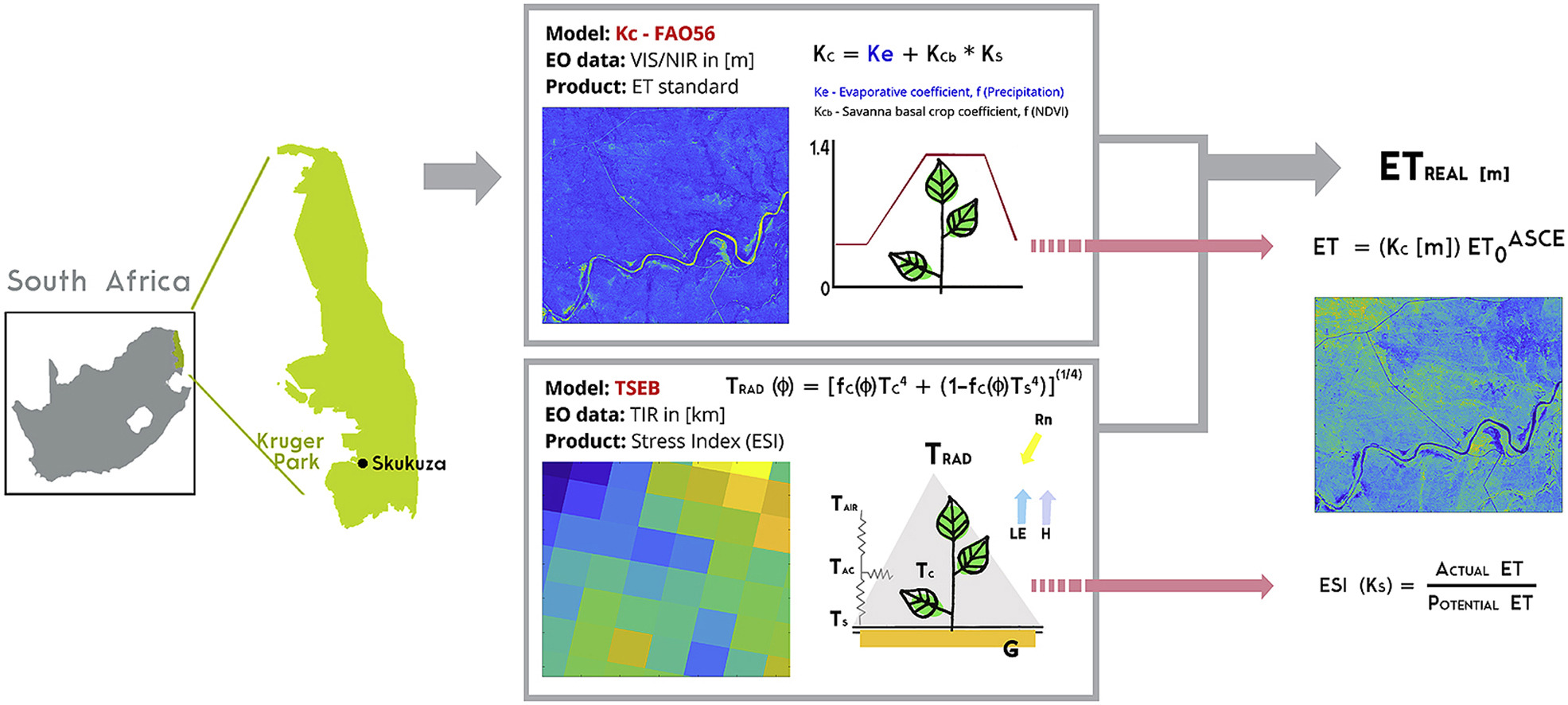
New publication from Ana Andreu (me), Timothy Dube, Hector Nieto, Azwitamisi E. Mudau, María P.González-Dugo, Radoslaw Guzinski and Stephan Hülsmann.
Here the link:
Here the abstract:
Abstract
Savannas are among the most productive biomes of Africa, where they comprise half of its surface. They support wildlife, livestock, rangelands, crops, and livelihoods, playing an important socioeconomic role in rural areas. These water-limited ecosystems with seasonal water availability are highly sensitive to changes in both climate conditions, and in land-use/management practices. Although monitoring programs for African savanna water use have been established in certain areas, most of them are largely restricted to point based measurements or coarse scales, and are not fully capable to provide distributed timely information for planning purposes. In this study we develop a mechanism for monitoring the water used by African savanna from fine scale (meters) to watershed scale, integrating the effects of the water stress. Our hypothesis is that the Ecosystem Stress Index (ESI) is a valuable tool to downscale estimates of actual evapotranspiration at coarse scale, to high resolutions. To monitor savanna water fluxes in a semi-continuous way this study integrates two different ET-estimation approaches: Kc-FAO56 model, integrating reflectance-based “crop” coefficients (SPOT 4 & 5 satellites), is used to derive unstressed savanna evapotranspiration (with high spatial resolution), and the two-source surface energy balance model -TSEB, integrating radiometric surface temperature (AATSR satellites) allows the determination of water stress across savannas (ESI, with low spatial resolution). The difference between estimated and observed surface fluxes derived from TSEB (RMSDLE = 53 Wm-2, RMSDH = 50 Wm-2, RMSDRn = 60 Wm-2, RMSDG = 21 Wm-2) were of the same magnitude as the uncertainties derived from the flux measurement system, being sufficiently accurate to be employed in a distributed way and on a more regular basis. The approach of ESI to downscale ET proved to be useful, and errors between estimated and observed daily ET (RMSD 0.6 mmday−1) were consistent with the results of other studies in savanna ecosystems. The modelling framework proposed provided an accurate representation of the natural landscape heterogeneity and local conditions, with the potential of providing information suitable from local to broader scales.
More links about the TIGER PROJECT
Hands-On Workshop on Remote Sensing for Monitoring Water Fluxes in African Savannas
Remote Sensing for Monitoring Water Use and Stress in Savannas: A Handbook
Remote Sensing for Water Management in Africa’s Savannas
Earth Observation Tools to Build Disaster Management Capacity in Africa
UNU-FLORES Awarded TIGER Grant to Study Water Stressors in Savannas

whoah this blog is wonderful i really like reading your articles. Keep up the great paintings! You realize, a lot of people are hunting round for this info, you could help them greatly.